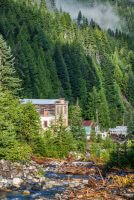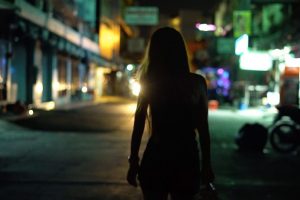I had to pee. I got up from my cot, unzipped the flaps to my Weatherport tent, and stepped out into the breezy tropical night. It was a new moon. It was dark and the swells breaking on the coral reef surrounding the island provided the bass notes to a ghostly night chorus of tens of thousands of nocturnal seabirds. I could hear sand being thrown about as Bonin Petrels dug their 6-foot nesting burrows next to my tent. I looked up, and the soundscape faded away as I grasped the magnitude of the spectacle above me. The sky was clear and on fire with hundreds of thousands of glowing neon stars. Nebulae and galaxies were easily visible with the naked eye. The nearest people and man-made lights were 400 miles away. The nearest big city, Honolulu, was 800 miles away — the distance between Chicago and New Orleans. And in between was the wide-open ocean of the tropical North Pacific. I was on Laysan Atoll in the Northwestern Hawaiian Islands, one of the great remote outposts of wild nature left in the world.
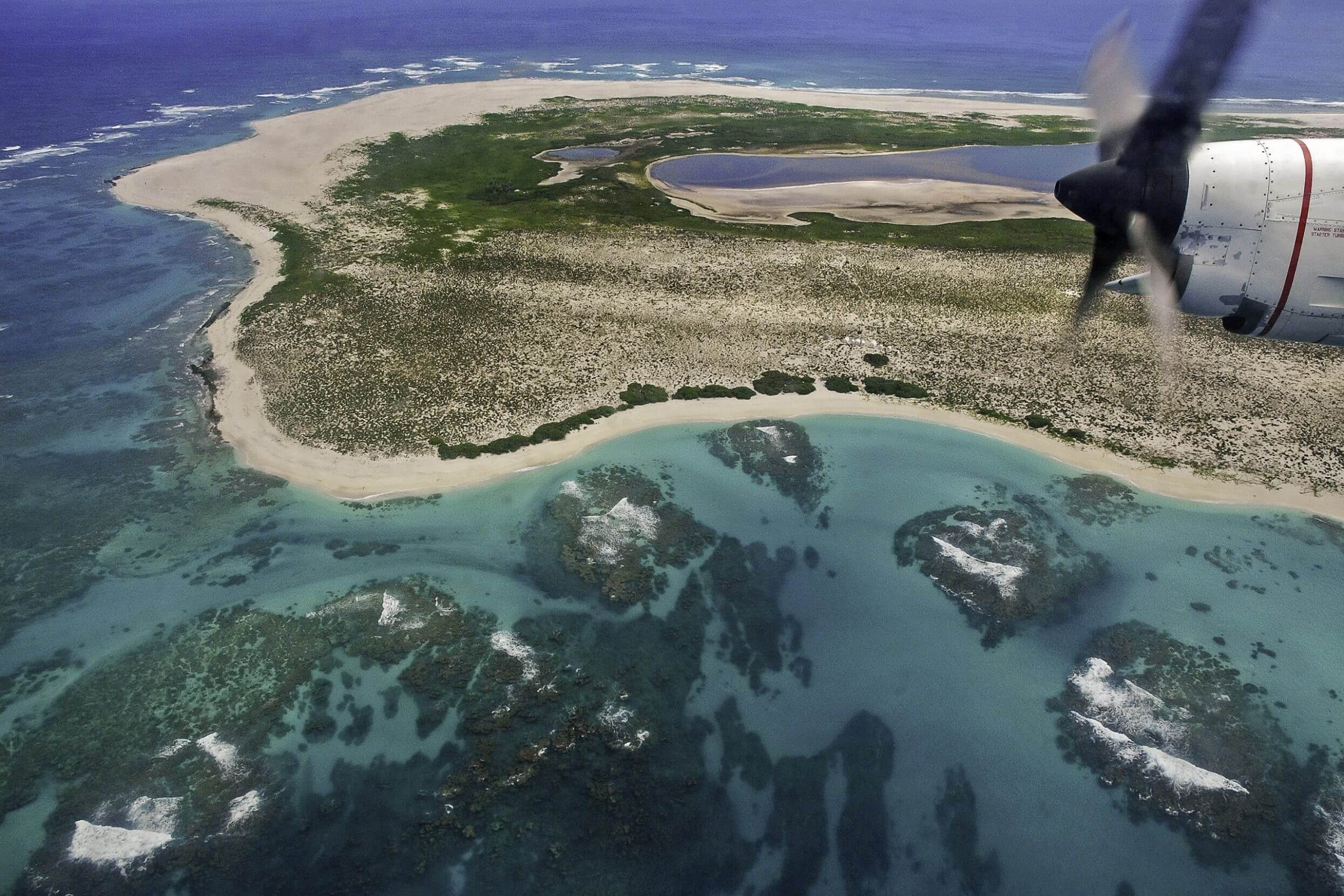
Laysan from the air. The reef system supports 131 species of reef fishes and 27 species of corals. Laysan’s Hawaiian name, Kauō, means egg and is a reference to both the shape of the island and the abundance of life present. PHOTO: DAN POLHEMUS/U.S. FISH AND WILDLIFE SERVICE.
It had been more than three months since our five-person crew had arrived on the SS Midway, took what would be our final freshwater showers for almost six months, put on sterilized underwear straight out of the freezer and other brand-new clothes — due to strict quarantines against invasive plants — and stepped ashore in paradise. It was the winter of 1998; I was a 23-year-old volunteer for the US Fish and Wildlife Service and I was living the dream. I knew I wanted to be a marine biologist when I was four years old. Growing up on the cold, damp coast of British Columbia, I had always longed to work and live in an isolated tropical paradise, where the wild things are: the real ones. And now I was there.
The morning that followed the new moon star spectacle happened to be my one weekly day off from wildlife monitoring and invasive plant control duties, so I left camp for a five-mile solo island circumnavigation. I walked down the trail to the beach, marveling at the 360-degree canvas of clouds overhead, the massive green sea turtles and Hawaiian monk seals hauled out on the sand — sleeping away the land-based portions of their lives — and the large, shadowy forms of gray reef sharks and giant trevallies trolling the shallow waters. Even the view from the open-air outhouse was stunning: Naupaka and Heliotrope bushes full of cackling frigate birds, grunting red footed boobies, and angelic white terns.
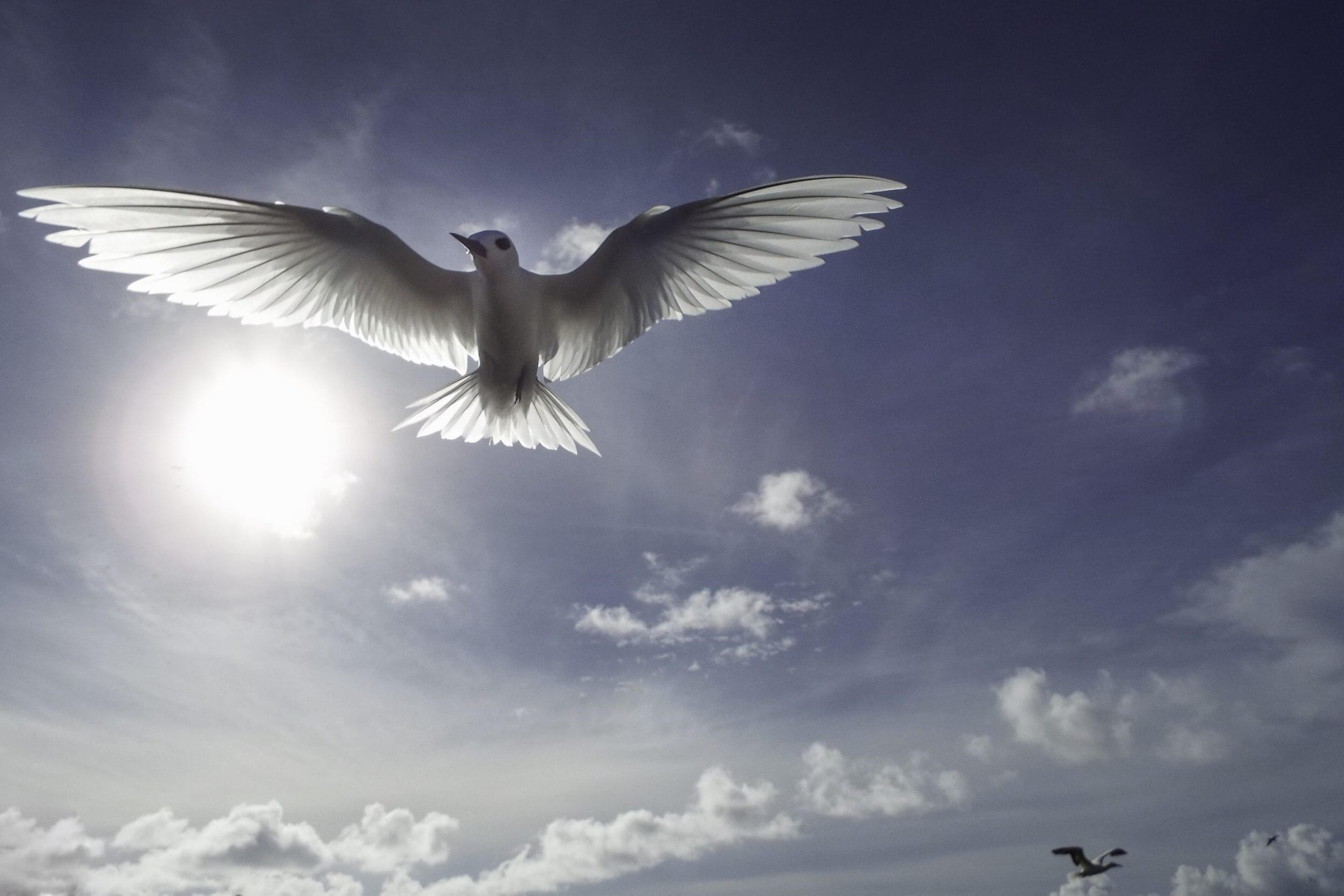
A white tern in flight on the coast of Laysan. PHOTO: FOREST & KIM STARR.
Rounding the island, I savored my much-needed alone time — when there are only five people in your world, you still need to get away from it all sometimes. As I walked, I noticed how my pasty Canadian complexion had been honey-bronzed, and that my ringlet afro of sun-bleached hair was starting to hang over my face. At one point, I stripped down naked for a dip in the ocean, and when I got out, I proceeded to walk down the beach in the buff for more than a mile. The birds, seals, and turtles didn’t seem to mind.
After I was decent again, I rounded the southern tip of the island into black-footed albatross habitat. I had passed several of the more than two-foot-tall seabirds with their seven-foot wingspans lounging near the water when I noticed one bird with a clearly broken wing. I passed by and continued up the beach. My worn Teva sandals stopped in the loose sand 30 feet away, and I looked back at the bird, apparently otherwise healthy and preening itself nonchalantly. I knew what needed to be done, but I didn’t know if I was prepared to do it.
~~
Albatrosses are some of the most amazing animals on the planet. The largest of them, the wandering albatross, can have a wingspan of almost 12 feet. They are the world’s most prolific flyers, able to travel 10,000 miles in a single journey and well over a million miles in a lifetime, crossing vast oceans to gather food for themselves and their chicks. Albatrosses can lock their long, slender wings in the open position like switchblades. They use a technique called dynamic soaring where they ride the updrafts of wind just above waves, gaining height by angling their wings, then turning and swooping effortlessly for great distances. Physiological studies have shown that a dynamically soaring albatross exerts no more energy than one sitting motionless, incubating its eggs. They even have special glands that allow them to drink seawater and extrude the salt out their nostrils. They are wanderlust personified, or rather, birdified.
The world’s oldest wild bird is a female Laysan albatross on Midway Atoll named Wisdom who, as of 2017, is at least 66 years old and still breeding! When you live among animals like this and see what they have to endure to survive and reproduce, that longevity is staggering. At sea, albatrosses are like gods — soaring with a grace and elegance that is both majestic and effortless. But on land, it’s a different story. Early sailors called black-footed albatross gooney birds — foolish or awkward things. Watching an albatross take off from the beach is like watching Fred Flintstone from the classic 1960’s cartoon starting his car: a flurry of leg motion followed by a bumbling beast blasting down the runway until air lifts the wings and the soaring deity is aloft again.
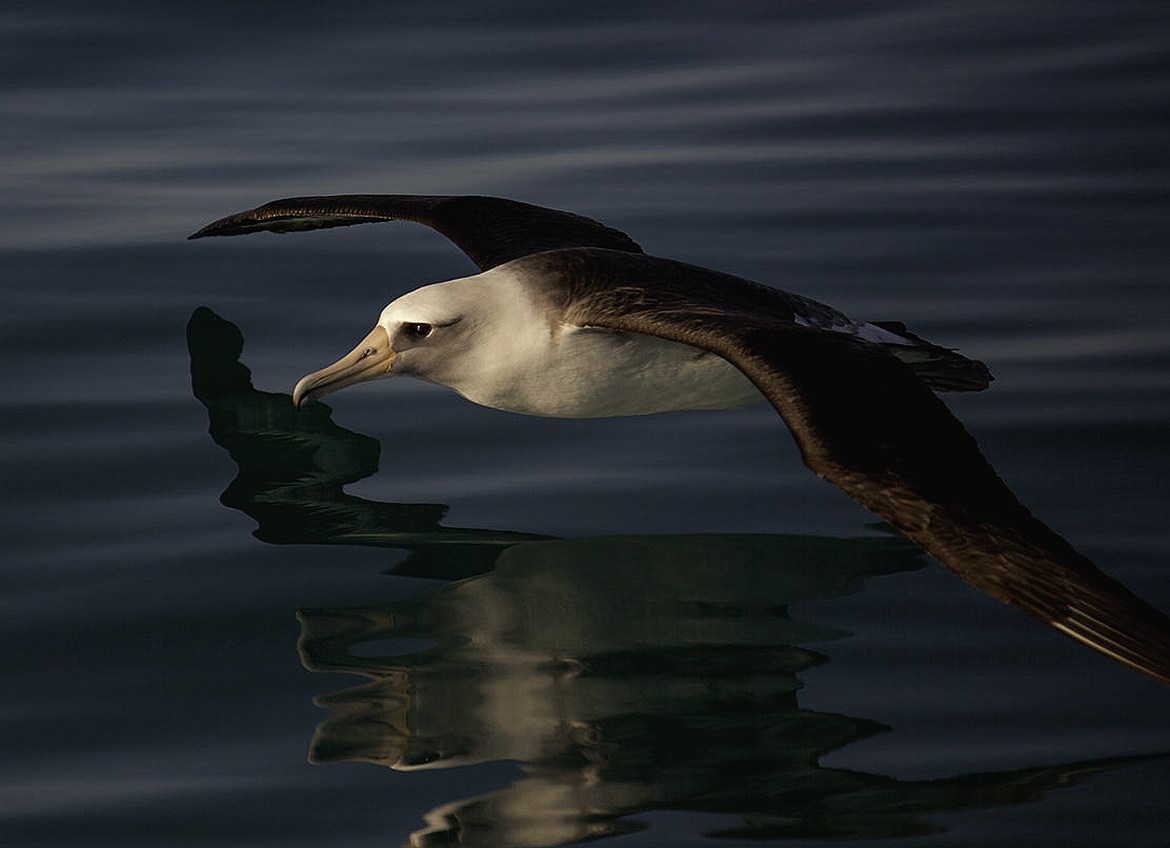
A Laysan albatross winging over the Pacific. PHOTO: ANDY COLLINS/NOAA OFFICE OF NATIONAL MARINE SANCTUARIES.
Albatrosses only come ashore to breed and when they do, these gods fall to earth and become endearingly goofy. When they walked, the two albatross species on Laysan showed me their different styles. The black-foots walked slowly, leaning forward on their front foot, honking and shuffling their shimmering, dark-brown bodies like old-time gangsters. The more numerous, mostly white-feathered Laysan albatrosses walked on the back foot with a joyous swagger straight out of a 1970’s disco club. And then there’s the dancing. Until you see it in person, nothing can truly prepare you for the incredible mixture of sexual selection theory and unapologetically joyful booty-shaking that is an albatross dancing.
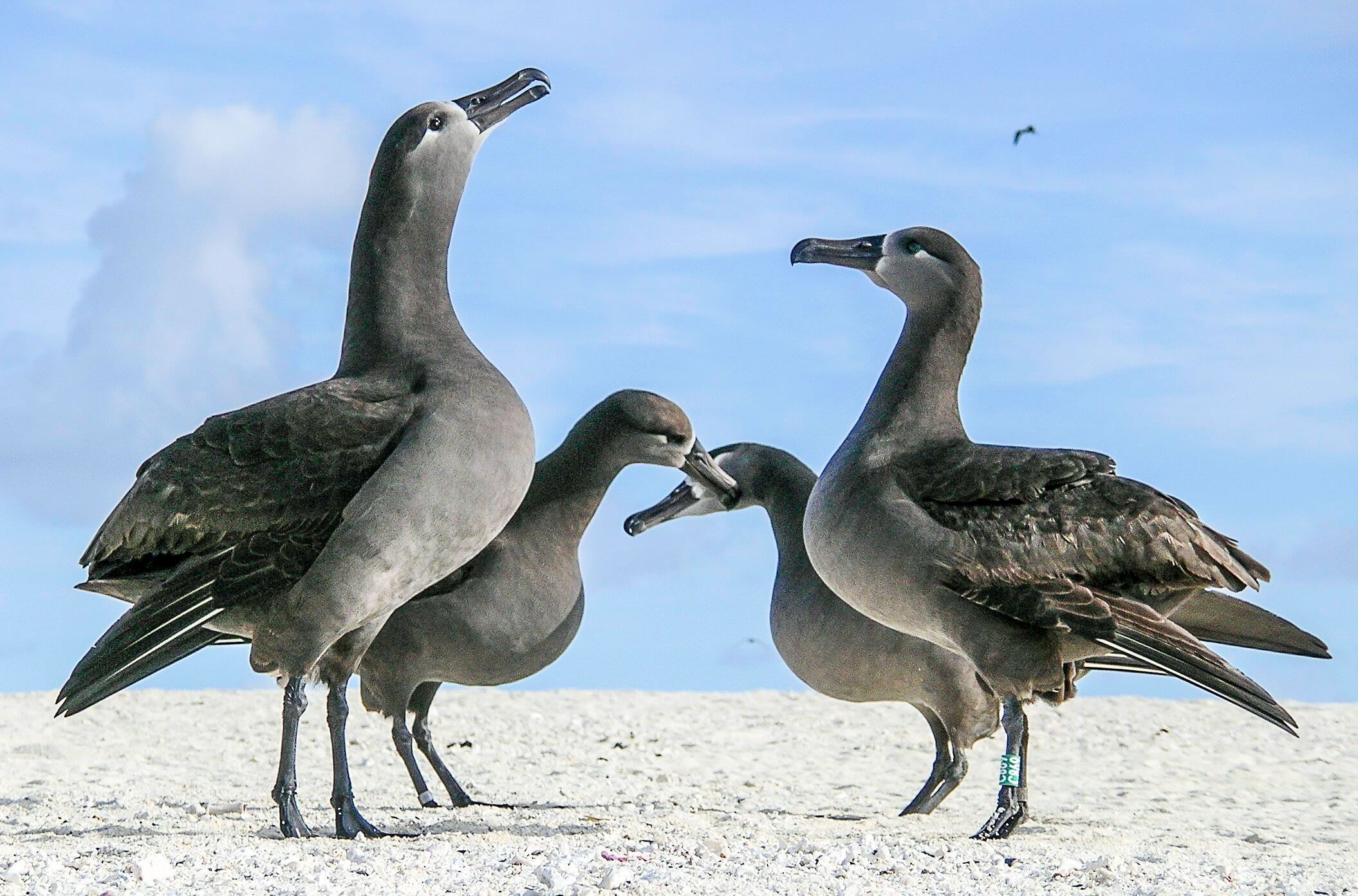
A group of black-footed albatrosses on the shore. Albatrosses engage in intricate dancing to court partners and mate for many years. PHOTO: ANNIE SCHMIDT.
These birds take years to find a mate and breed. They do this by performing ritualized “dance moves” with many partners over several years until a partner is chosen, and then the birds usually stay mated for a long time and never dance with each other again. The dancing involves rhythmic head bobbing, furious bill clacking, elaborate poses worthy of James Brown in his prime, screeching side-to-side head shakes, and plaintive honks called “sky moos.” I don’t think any natural event I’ve witnessed has filled me with as much joy as watching albatrosses dance. I would sit on Laysan and watch them for hours and hours in my spare time. I even paired the perfect theme song to the festivities: the 1976 disco hit “You Should Be Dancing” by the BeeGees — the song John Travolta did his solo dance routine to on the illuminated floor in the movie Saturday Night Fever. I would sing it aloud to dancing albatrosses all the time. “You should be dancing, yeah…”
Until you see it in person, nothing can truly prepare you for the incredible mixture of sexual selection theory and unapologetically joyful booty-shaking that is an albatross dancing.
Spending so much time around them on the island, my brain marveled at all the amazing traits of albatrosses, but I think the real connection I developed with them came more from my heart. I could relate to these wandering creatures, children of the sea but bound to the land, in one way noble and admirable, but also flamboyantly geeky to the core. And the one in front of me with a broken wing was going to die, slowly.
~~
Being a biologist in wild places teaches you that when there is a lot of living going on — say, hundreds of thousands of seabirds making hundreds of thousands of babies — there is a lot of dying as well. I often cringe at baby animal calendars, realizing that many people in the modern human world think most animals that are born will live long lives. This is not true. Nature is filled with death and tragedy. In my line of work, you have to make your peace with that. Just consider the albatross: Six-month-old chicks fledging to the sea on Laysan, too young to fly with the grace of their elders, are often swallowed whole by tiger sharks who migrate there to gorge on the awkward youngsters. Adults die on longline hooks or, thinking they are eating flying fish eggs, fill their bellies with plastic.
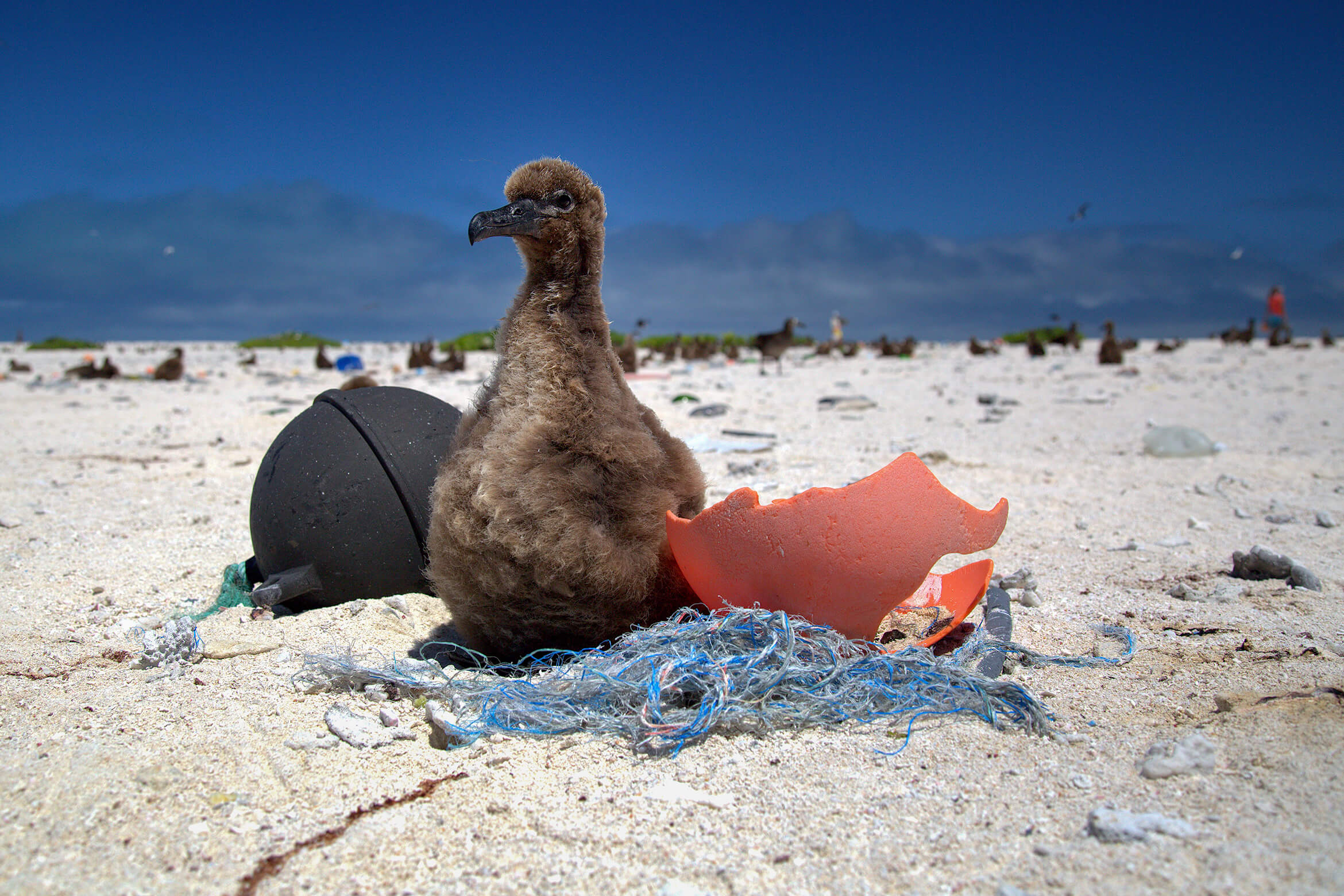
A Laysan albatross chick rests atop a fishing net, surrounded by marine debris. Smaller objects find their way into the bellies of adult albatrosses who mistake the plastics for fly fish eggs. PHOTO: NOAA CORAL REEF ECOSYSTEM PROGRAM.
Seabirds breed on remote islands so they can escape land-based predators, but sooner or later we always show up. Laysan has a long history of human interference. At the very beginning of the 20th century, guano miners and feather hunters ravaged the islands. They reduced seabird populations by 90% and introduced rabbits, which decimated native island vegetation and caused the extinction of three species of land birds found nowhere else in the world. The feather trade was particularly brutal. In 1909, a feather merchant hired 23 Japanese laborers to head to Laysan and gather feathers. During just a few months, they killed hundreds of thousands of seabirds, mainly to obtain their wings. Wings were cut off of living birds, leaving them to bleed to death; birds were herded into a dry cistern and kept by the hundreds to starve to death in order to use up the fatty tissue next to the skin so that little or no cleaning would be required. Albatross chicks were boiled alive in cauldrons to remove their down.
Outcry and prosecutions by the U.S. government over these events motivated President Theodore Roosevelt to issue an executive order creating the Hawaiian Islands Reservation for Birds, including Laysan Island, which is now a National Wildlife Refuge. The remote island chain that includes Laysan is now also part of the U.S.’s largest fully protected conservation area. The Papahānaumokuākea Marine National Monument, as the area is now called, was established by President George W. Bush in the waning days of his presidency. It commemorates the union of two legendary Hawaiian ancestors — the earth mother and the sky father — who gave rise to the islands.
These populations have had enough human interference and now it is their time to be left alone (outside of the occasional annoyance of a working biologist). But I couldn’t shut out my inner “dolphin hugger.” An albatross with a broken wing is a dead albatross. These birds gain all their energy from the open sea and without flight, there is no food. Inside my head, my scientist brain was telling me to repress my emotions. The broken wing was probably some freak event — a wave hitting the bird in the wrong way during a storm. Best to move along. It’s just one bird: its death will have no impact on the overall population.
An albatross with a broken wing is a dead albatross.
But I couldn’t help myself. I thought of the albatross on this uninhabited part of the island, starving to death for weeks, its muscles wasting away, its head and wings drooping listlessly until it could no longer move. Then the ghost crabs would come by the dozens. Scurrying out of their sand burrows, they would pick this dehydrated and emaciated — but likely still alive — albatross to the bone, plucking its eyes out of their sockets. Nothing would be left but a sun-bleached carcass of brittle bones. The only recognizable elements would be plastic toys and cigarette lighters sitting in a neat pile where the mighty bird’s chest used to be — non-biodegradable reminders of its past encounters with the human world. I knew what I had to do.
I didn’t want to do it and I didn’t really know how to do it, but I had to do it. The quickest way would be to break its neck. But I wasn’t trained to do that and I was scared to venture down that road without knowing if I would be successful. Looking out into the tranquil water, I realized that the only real option for me was to drown the bird.
Before I could talk myself out of it, I grabbed the bird behind its head with my right hand, controlled the bill in my left and scooped it up into my arms. You don’t need a net or a trap to catch an albatross, you just walk up to it; it usually stares at you slightly, and then if you know what you’re doing, you just grab it. Like much of the wildlife on Laysan, albatrosses have no real fear of humans — hence the ease with which the destruction of years past was committed.
I held the huge, wriggling bird tight in my arms, looked deep into its eye, and apologized for what I was about to do. Then I walked down the slowly sloping beach until the water was at my waist, dropped to my knees, and plunged the bird underwater.
~~
I was a fool.
I had a naïve notion that this “noble” action on my part would pass without excessive struggle. I was hardened to the bluntness of this wild world. It wouldn’t be that bad. The albatross would fight its fate, but somehow, because this was “the right thing to do,” it wouldn’t also be an atrocious thing to do.
I was wrong. I had underestimated the fire to live that even the condemned maintain. The albatross fought. It fought hard. The bird wailed underwater. It sounded like it was screaming. Despite my hand tightly locking its bill, its cries were incredibly loud — I will never forget the sound — and great bubbles frothed up to the surface. The bird shook violently from side to side, its heavy breast bashing into me as I held it tight to my chest, its long legs and massive feet flailing wildly. I thought it would be over in 30 seconds, the thrashing and kicking.
The first minute passed. What am I doing? This is a mistake. I have to stop this. But I can’t stop this. I breathed heavily through my nose. My eyes were wide and my mind was exploding in doubt. The bird was still shrieking. It shook ferociously, staring through me with its wide, brown eyes. What was it thinking? But in that moment I knew, as a lightning bolt of memory struck: When I was 11 years old, I was nearly drowned by a friend in a public pool. I took him down the slide to the deep end unaware that he couldn’t swim. He jumped on me quickly; I struggled mightily and sucked in huge amounts of water. I descended rapidly. Time slowed. Fear, panic, and true anguish swallowed me whole. The water I loved gobbled me up like a sea monster. The albatross kicked again and I was thrown back into the present, the bird’s eye still locked on me. “I’m so sorry,” I said aloud.
One minute, thirty seconds. Tears streamed down my face. I couldn’t stop apologizing out loud to this amazing creature. The bird shuddered again, fiercely. The wails were now low whimpers. Two minutes. The struggling slowed dramatically but didn’t stop. At two minutes and thirty seconds, I rose out of the warm water, walked back onto the shore, and placed the bird on the sand — its brown eyes glassy, but its legs still moving ever so slightly.
I fell to the ground and I wept. I wept with an intensity of emotion I have never before or since experienced in my life — not with the loss of family members, of dear friends, of deep and true love. I wept with my whole body on that beach. I convulsed, head down, understanding on a level I had never wished for how cruel, unfair, and heartbreaking Nature truly was. And as my face was awash in waterfalls of tears and snot, I could feel the sun emerge from behind the clouds and warm me. I stood up and continued walking down the beach. I didn’t look back.
I continued up the eastern side of the island. My heart thudded like a brass knocker in my chest. The black shapes of frigate birds soared high overhead. I was hyperaware and totally disoriented at the same time. The lakeside coconut palm grove fluttered in the distance. It was the right thing; it was the worst thing I had ever done. I walked through the great Northern Desert, past thousands of black-footed albatrosses. Nothing had changed, but everything had changed. As I moved by birds sitting on nests, they snapped at me while others soared past in giant arcs. I looked down at my arm and realized my whole body was still vibrating. I faced the sea, closed my eyes and took several deep breaths.
I don’t remember how long I stayed, but when my eyes cracked open I saw waves breaking over the reef, and the eternally wide sky was filled with another majestic cloud painting. I had to go on.

A black-footed albatross glides over the water surface. PHOTO: ANNIE SCHMIDT.
Russell Bradley
Russell's parents threw him in the ocean when he was five years old. He cried for a minute but then never got out. He's a marine biologist, improviser, storyteller, writer, and nature lover.


